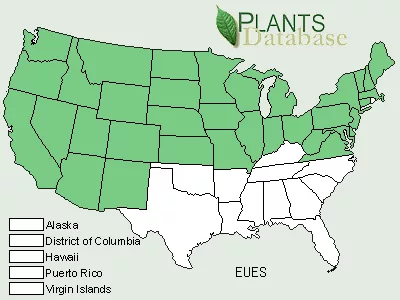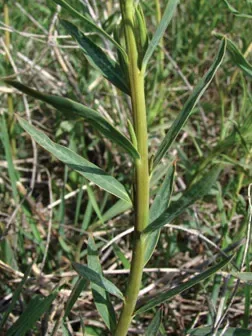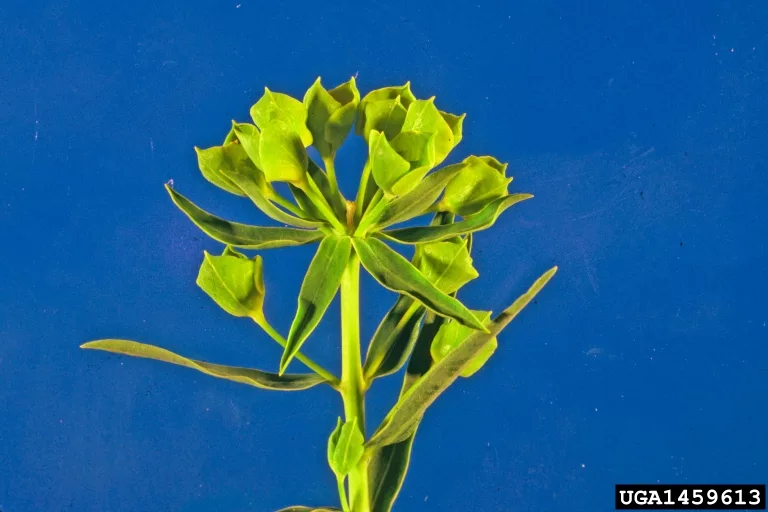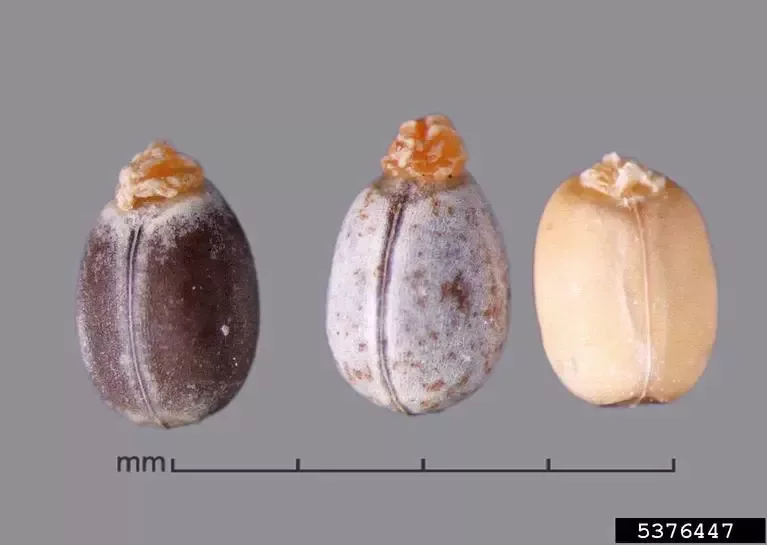
Leafy spurge (Euphorbia virgata), also known as wolf’s milk, is a long-lived perennial native to Europe and Asia. It was likely introduced to North America as either an ornamental or crop seed impurity in the early 1800s and was first recorded in the United States in Massachusetts in 1827. Since then, it has spread widely and can now be found covering much of the northern US as well as many of the prairie regions in the provinces of Canada.

Leafy spurge can grow in a variety of soil moisture conditions ranging from moist to dry. It is more aggressive in areas with less competition from native species. They grow easily in pastures, roadsides, abandoned fields, savannas and disturbed areas. Leafy spurge is distributed throughout the United States except in southern states ranging from Texas to South Carolina. The greatest leafy spurge infestations are found in west and mid-western States.


Stems: The bluish-green stems of the leafy spurge are smooth and hairless, arranged together in clumps. Euphorbia esula gets its alternate name, wolf’s milk, from the white, milky latex contained in its stems, which is secreted when either the stems or leaves are broken.
Note: this latex/sap can poison some livestock species and cause severe skin irritation when touched.

Leaves: 1-4 inches in length, the leaves of this plant are numerous and attached directly to the stems. They grow alternately and sometimes in a spiral arrangement. The leaves are narrow and waxy with smooth edges. Although they appear bluish-green like the stems most of the time, they turn a yellowish or reddish-orange in late summer.
Flowers: The flowers, which bloom in mid-June, are small, yellowish-green, and lack both petals, as well as sepals.

Seeds: The seeds of the leafy spurge are contained in thrice-lobed capsules that explode when the dried seeds mature, launching them as far as 15 feet from the parent plant.


Leafy spurge is able to resist multiple types of control. It is capable of regenerating from small pieces of root and forming new individuals from root sprouts. Additionally, it produces a large number of seeds that last as long as 7 years in the seed bank after being launched away from the parent plant. These factors make Euphorbia esula very difficult to manage. A combination of 2 or more of the following control types is best for the successful control of this invasive plant:
Biological – 5 species of flea beetles (Aphthona spp.) have been imported from Europe and released as a natural enemy of the leafy spurge. Although the adults eat on the plant’s foliage, the most damage is accomplished by their larvae which eat away leafy spurge’s extensive root system. This method does not produce immediate results, as the flea beetles often take several years to establish themselves and then require an additional few years to significantly reduce a leafy spurge stand.
Grazing – Sheep and goats, unlike many other livestock species, are unaffected by the normally toxic juices found in the leafy spurge’s stem and will readily graze upon stands of leafy spurge. Although this method will not eradicate Euphorbia esula from the grazing site, it will weaken the plants by forcing them to resprout and thereby diminishing their root reserves. Note: this management method runs the risk of seeds being carried by the animals to uninfested locations.
Chemical – The following herbicides are known to be effective on leafy spurge: 2,4-D, Amitrole, Dicamba, Glyphosate, Imazapyr, and Picloram. Spraying herbicide works best when used with other management tools.

Euphorbia esula is capable of completely taking over large swathes of land by outcompeting the native vegetation. It is especially aggressive in drier habitats where competition is reduced. When leafy spurge is present at a site, the yield of desirable forage species can be reduced drastically. Additionally, cows and other livestock will avoid grazing sites that have as little as 10% cover of Euphorbia esula.
Biesboer, David D. “Euphorbia Esula.” Bugwood Wiki. Center for Invasive Species and Ecosystem Health at the University of Georgia, n.d. Web. <http://wiki.bugwood.org/Euphorbia_esula>
Lym, Rodney G. “Leafy Spurge Control Using Flea Beetles.” NDSU Agriculture. North Dakota State University, n.d. Web. <https://www.ag.ndsu.edu/pubs/plantsci/weeds/w1183.pdf>
Thunhorst, Gwendolyn, and Jil M. Swearingen. “Leafy Spurge.” Plant Conservation Alliance. National Park Service, n.d. Web. <http://www.nps.gov/plants/alien/fact/eues1.htm>
